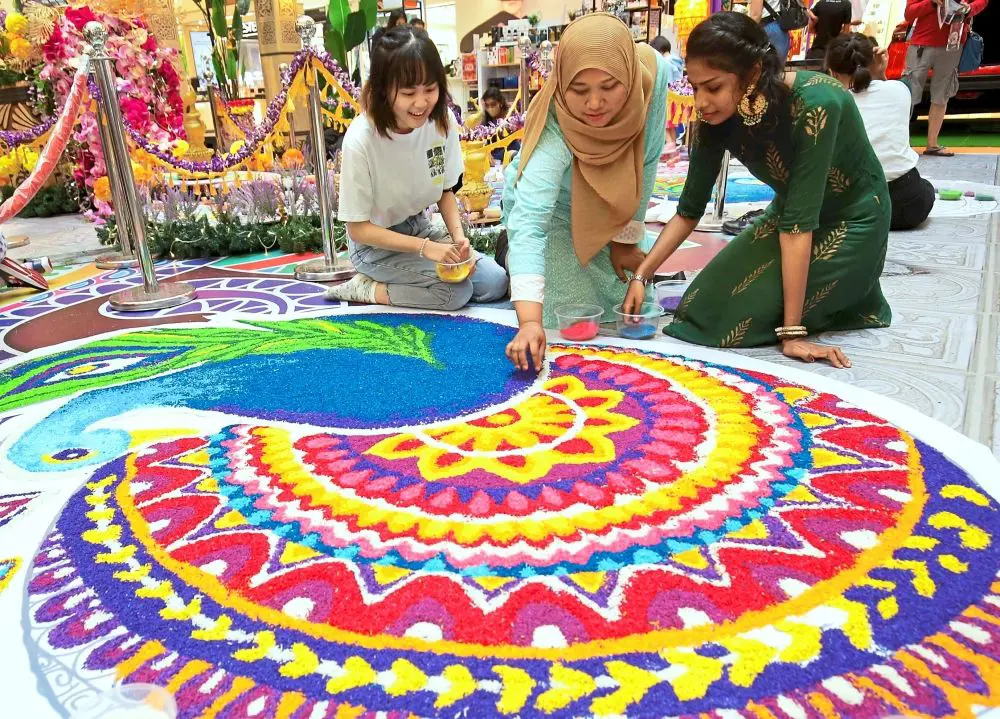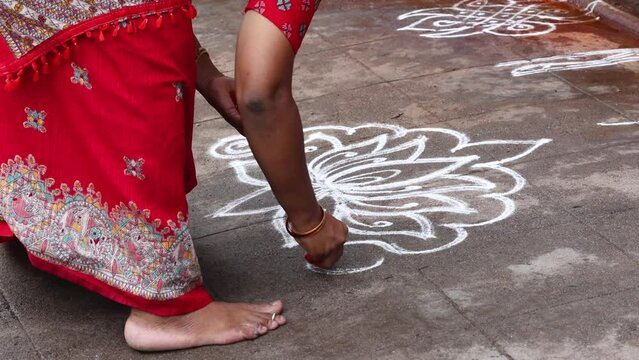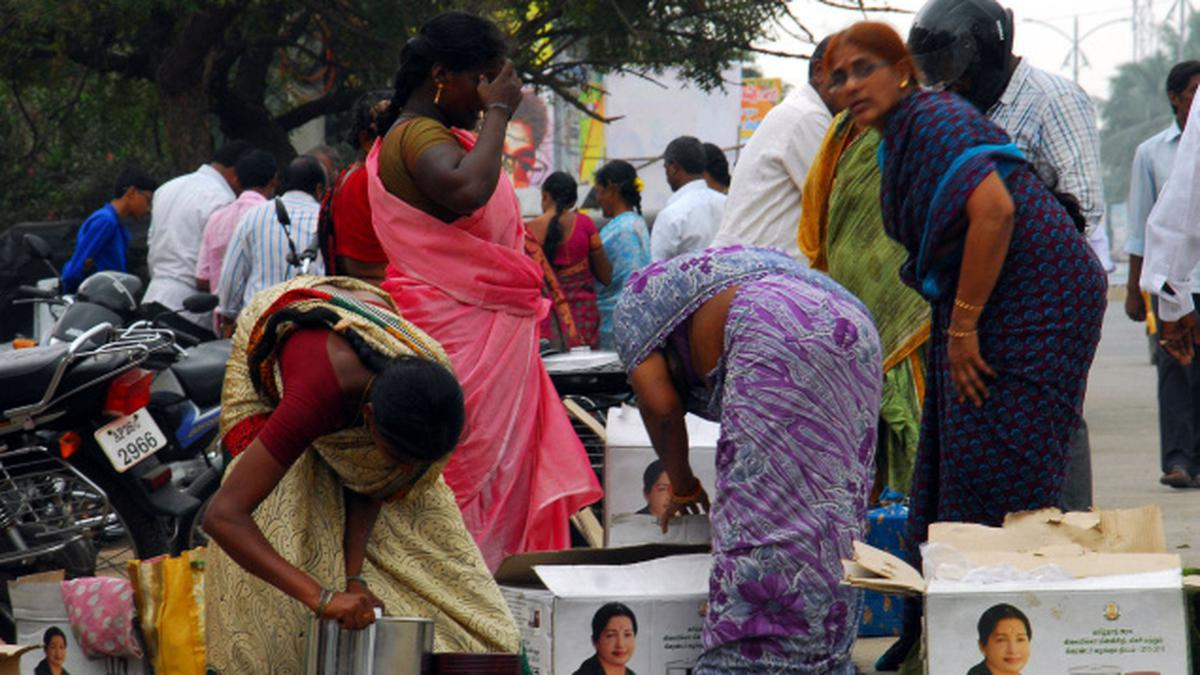Of Indian Men and Kolam
Then came the comment about me being Malaysian and how no one is forcing Indian women to put kolam daily, unlike my dad who is a “lusu ku,” forcing me to put kolam daily. Apparently, Malaysian Indians are the people who force women to put kolam daily unlike Indians. So, I should take my advice to the kuthiyans in Malaysia, it seems.
The frequency of kolam in some Malaysian Indian households is every Saturday. That too, only if someone in the house is interested in the artform. Men do it too and we use chalk. The kolam lasts a whole week and is put within the house's wall compound. For the birds, we still scatter raw rice. |
| Rare pic of a Malaysian kuthiyan putting kolam. Enna Mike, ucchama? |
There’s a Malay saying, “bodoh sombong.” It means, “daft yet cocky.” In Malaysia, kolam is just cultural art. Malaysian Indian women putting kolam every morning died with my great-grandmother’s era—coz those women needed to go to work and kolam was extra work. Kolam was replaced by the culture of scattering raw rice for the birds every morning—it’s literally Malaysian culture.
My grandmas and the women in their era figured that if the purpose of kolam is to feed the birds, we’ll just scatter raw rice every morning. It’s something that’s drilled since we were young. The Chinese shops here also sell broken rice for this purpose.
Through this norm, kolam transformed into cultural art and a business in Malaysia. And we don’t use rice flour to do the kolam. We use dyed rice and color powders. Since the materials are inedible, we put those kolam indoors—and we are extra careful so we don’t step on it—appreciating the labor that went into it. Shopping malls sport a gigantic kolam every Deepavali season. We also put kolam on Pongal mornings—I do it too. That’s when the kolam design book is retrieved from the dusty storeroom.
Not knowing any of these, those “bodoh sombong” Indian men run their mouth. No one is forcing it seems. Then why only Indian women in India are expected to do it?
I know that in south India, it’s a cultural imposition for the women to put kolam daily—so, I showed the cultural shift in Malaysia. Because I empathize with those Indian women despite living across the Indian ocean. And I thought I’ll show them that there are options.
TN men accepted when free TVs and fans were given by the TN govt. But the moment TN govt distributed free grinders to women, the men became gibbons whose butts were rubbed with Malaysian bird eye chilies—apparently, TN women will become lazy. Overworking women and restricting women’s options are perhaps Indian men’s favorite pastime.
Indian men, who see their moms, sisters, wives and daughters do this extra labor, prefer whataboutery rather than reflect if putting kolam daily is necessary. They don’t think about easier ways to do things. They say things like, “Why paint your house and decorate your house then?” Ask if they paint and decorate their house daily—there’s no answer—only abuse.
Onnu sontha butthi irkanum. Illa sol butthi irkanum—either you should have your own thinking—or you should be open to learning from others. These Indian men are too daft and cocky to practice either. Yes, I am a Malaysian Indian. So, I will preach our Malayan ancestors’ wisdom—from making dowry redundant to elevating kolam as cultural art rather than female-centric, sexist extra (unnecessary) labor.
I didn’t force anyone from India to follow the Karuththu Kannammaa page—like how Indian women are forced to put kolam under the pretext of culture. They followed it out of their own volition. I created this page for the Malaysian Indian community—not my fault if Indians follow this page more than Malaysian Indians.
So, I will
post what we Malaysian Indians or Malaysian Chinese do differently that may benefit Indians. If
Singaporean Indians or South African Indians have a page and they speak about
their reformed cultures, I’d listen and introspect. Culture is created by us
for us. When the culture no longer serves us, holding onto it just because it’s
age old, and abusing people who suggest reforms is… well, I don’t really care. I
lose nothing. It’s the women there who are suffering from burnout and the men sadistically
enjoying it.














Comments
Post a Comment